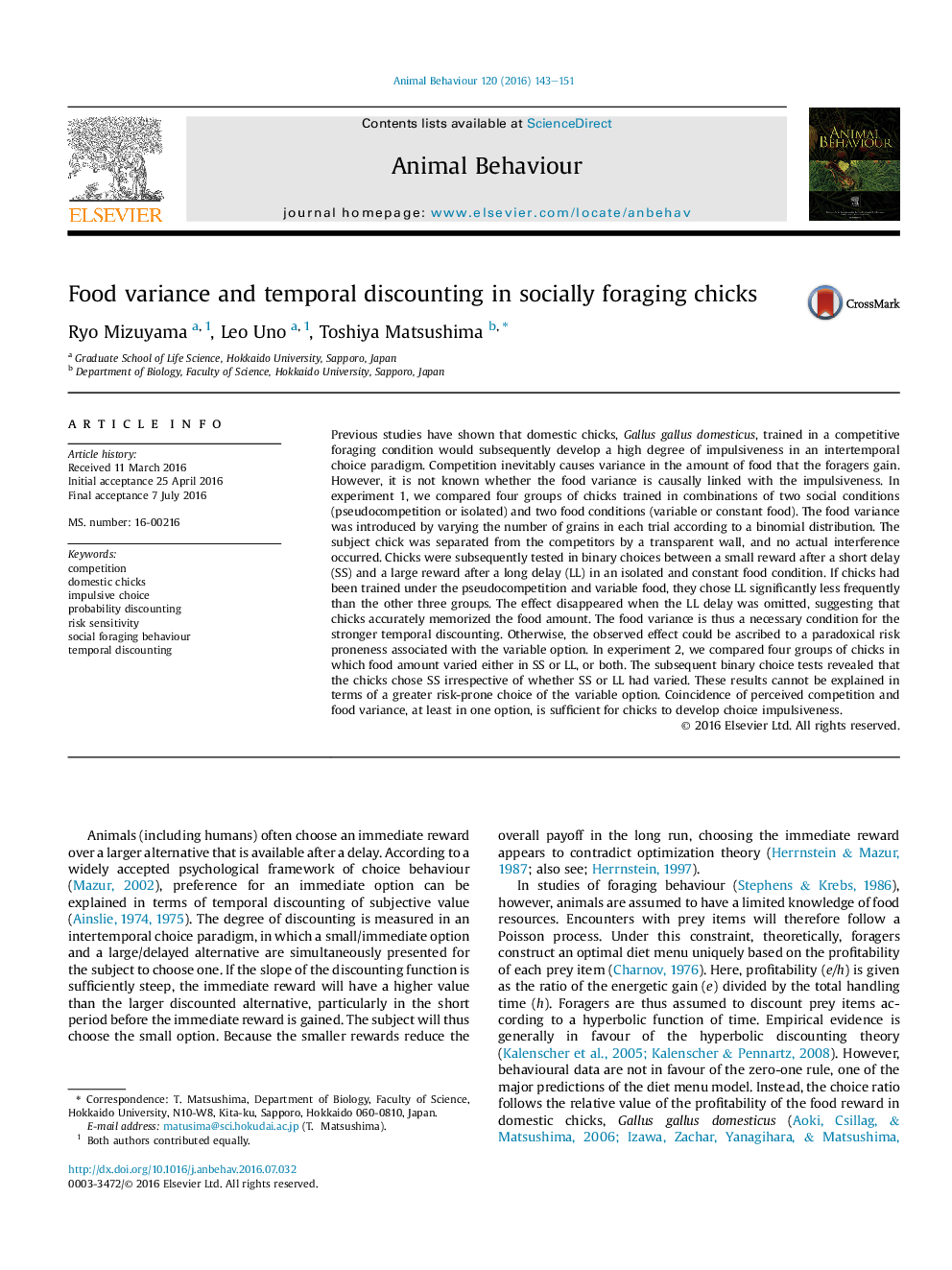| Article ID | Journal | Published Year | Pages | File Type |
|---|---|---|---|---|
| 2416222 | Animal Behaviour | 2016 | 9 Pages |
•Domestic chicks were trained to associate colour cues with delayed rewards.•Chicks trained in social foraging were tested in intertemporal choices.•Coincidence of variable food and competition was necessary for impulsiveness.•Variable food amount in either option was sufficient for impulsiveness.
Previous studies have shown that domestic chicks, Gallus gallus domesticus, trained in a competitive foraging condition would subsequently develop a high degree of impulsiveness in an intertemporal choice paradigm. Competition inevitably causes variance in the amount of food that the foragers gain. However, it is not known whether the food variance is causally linked with the impulsiveness. In experiment 1, we compared four groups of chicks trained in combinations of two social conditions (pseudocompetition or isolated) and two food conditions (variable or constant food). The food variance was introduced by varying the number of grains in each trial according to a binomial distribution. The subject chick was separated from the competitors by a transparent wall, and no actual interference occurred. Chicks were subsequently tested in binary choices between a small reward after a short delay (SS) and a large reward after a long delay (LL) in an isolated and constant food condition. If chicks had been trained under the pseudocompetition and variable food, they chose LL significantly less frequently than the other three groups. The effect disappeared when the LL delay was omitted, suggesting that chicks accurately memorized the food amount. The food variance is thus a necessary condition for the stronger temporal discounting. Otherwise, the observed effect could be ascribed to a paradoxical risk proneness associated with the variable option. In experiment 2, we compared four groups of chicks in which food amount varied either in SS or LL, or both. The subsequent binary choice tests revealed that the chicks chose SS irrespective of whether SS or LL had varied. These results cannot be explained in terms of a greater risk-prone choice of the variable option. Coincidence of perceived competition and food variance, at least in one option, is sufficient for chicks to develop choice impulsiveness.
